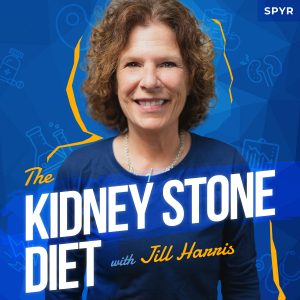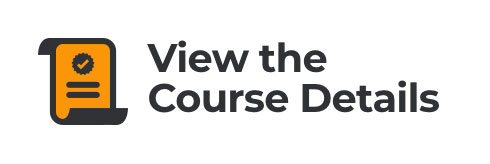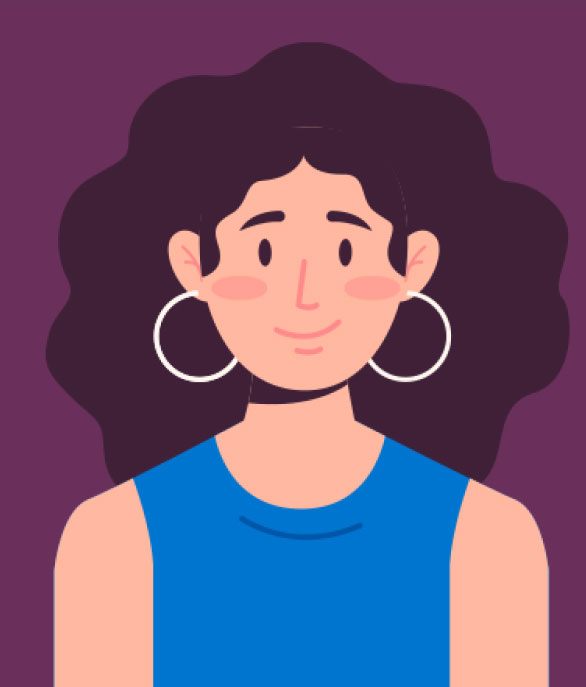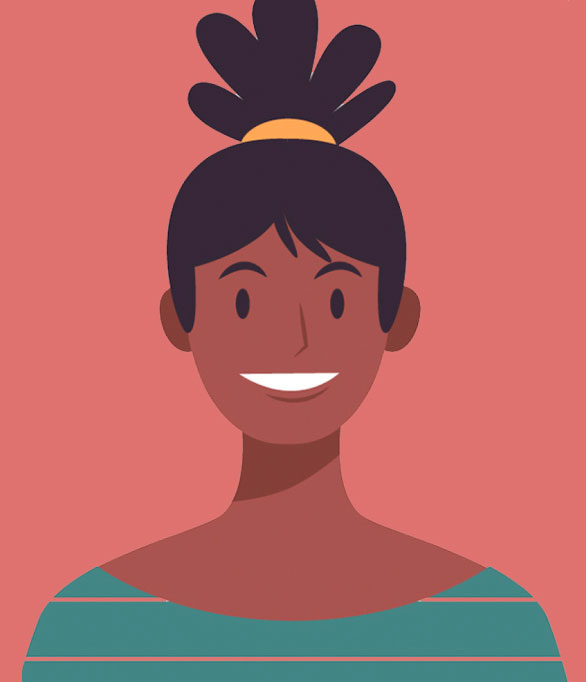This week, Jill answers a frequently asked question about spaghetti, pasta, and if they’re safe to eat on the Kidney Stone Diet.
Jeff Sarris: Welcome back to the Kidney Stone Diet podcast, the show about reducing your kidney stone risk and living your best life. I’m your host fellow student, Jeff Sarris.
Jill Harris: And I’m Jill Harris, your kidney stone prevention nurse, a.k.a. Kidney Stone Diet. That’s me.
Jeff Sarris: That is you. It would be funny if that was your name name. It’d be a very specific first name, Kidney Stone Diet Harris.
Jill Harris: Wouldn’t that be funny? Well, I don’t have a middle name. We made that clear. Mom, no middle name. It could be Jill “Kidney Stone Diet” Harris.
Jeff Sarris: Ya know, there’s always time!
Jill Harris: There’s always time. All right. So, I’m ready. We’ve already taped four shows today, so this old lady’s ready to rock and roll.
Can I have pasta on the Kidney Stone Diet?
Jeff Sarris: So, instead of a listener question this week, we are going to do an FAQ. But for everyone out there with a question, the number again is 773-789-8763. And we’d love to have your voice on a future episode. And for everyone who has called in, we’ll get to you in the upcoming weeks. We appreciate everyone’s calls! So, this week, the question though, that we’re dealing with is, is spaghetti high in oxalate? Which, of course, means spaghetti, pasta. It’ll all fall under the same umbrella, but that is a common question because of the Harvard list.
Jill Harris: It is a common question. And since I’m wearing red, I saw myself in the camera, I’m like, “Please press the red subscribe button.” I didn’t forget, people. Sixty-five percent of you have not subscribed, but you’re watching, so please do that for us! I love you! Thank you!
Okay, spaghetti. Is spaghetti high in oxalate? Well, Harvard says one cup of spaghetti–which, by the way, no one eats just one cup of spaghetti–is 11 milligrams of oxalate and then next to it, it says “high.” And this is why I do not like the Harvard oxalate list because of the adjectives they use. So if you go to kidneystonediet.com, you will see that we have a safe oxalate list. If you just go to Google and put “Kidney Stone Diet safe oxalate list,” it will come up. You can do that and then you’re going to see it is the Harvard list, but we have taken all the adjectives away.
So you simply have the food, the portion size, and the amount of oxalate. Because once people see–they read it like this, “Oh, holy bragioli! Spaghetti, one cup is 11 milligrams. Harvard says that high!” So, we just go by that word “high” and we stop eating it. Quite frankly, spaghetti is not a health food, but it brings a lot of joy to people. This girl here’s Italian, so she likes her pasta here and there, for sure. So does that mean you can’t have it because Harvard says that it’s high? A hundred percent absolutely not! Please have your pasta! One cup of it is going to be 11 milligrams of oxalate.
You may say, “Well, I like rigatoni. I like mostaccioli. I like penne.” What about it? What about it? Just whatever, people! Just say it’s about 11 milligrams of oxalate. They didn’t measure every single pasta. Pasta is still made up of the same ingredients. It’s just all different shapes. That’s all. So eleven milligrams. Most of you, unless you’re a bariatric patient or malabsorption patient, you get 100 milligrams of oxalate a day.
Watch how much oxalate’s in your sauce!
You could have two cups if you wanted to, but you’re gonna put tomato sauce on it. There’s some oxalate, too. So, of course, you can have it, but be mindful of your portions. Most people are eating three cups of pasta. We have a whole bunch of pasta in a bowl. And then we have a bunch of sauce. People also get nervous about all the tomato sauce. Tomato sauce is higher in oxalate. Jeff, when you get a second, look at how much. It’ll say tomato sauce, I think. Look under tomato and see what it pulls up for the oxalate level.
Jeff Sarris: Yeah, so have half of a cup of tomato sauce is 17 milligrams.
Jill Harris: So if you’re having half a cup, which isn’t very much, and you’re having a couple cups of pasta, you’re like, you know, 40 milligrams of oxalate. I’m rounding up. So, 40-50. It adds up quickly because of portion size. So when I have pasta, when I do have it, I’ll have a cup. I don’t eat a big portion of pasta because, you know, there’s no fiber or anything in it and I’m one of those boring people I do like to eat for health, right? It doesn’t mean you can’t have pasta. Please enjoy! But I do pay attention to my portion size. Now, being Italian, I don’t want to see no little tiny baby doll portion in my plate.
I like to see some food on my plate, people. I want it robust. So what I do is, I start putting also vegetables in my pasta so it looks like a nice bowl of food. So, I have broccoli, and onions, and whatever I have in there, all different kinds of kale. I’ll put a lot of different vegetables in there, red peppers, all kinds of things. So it really bulks up my product. I have kidney stone formers in my family, so I do what I ask you guys to do and I don’t put so much sauce on it. Let’s just say this. I’m cognizant that they’re not free foods. They all have oxalate in them. So watch the portion size.
If you’re sad like me, when you see a little cup of food on your plate, then bulk it up with other healthier things. And, you know, just don’t have three cups of sauce on your product. It’s perfectly okay to have pasta. I always tell my patients please bring it back on your plate, not a problem. But don’t eat it every day. Don’t eat five cups and watch your portion size. That’s it. That’s all we have to do. And the other thing is get your calcium needs met every day. So the way oxalate leaves our body is it binds with calcium rich foods and it leaves through the stool.
If we don’t get enough calcium in our diet, our oxalate gets reabsorbed back into our body, and we have higher oxalate amounts. So, the calcium aspect of this is even more important than the oxalate aspect in and of itself. So, please remember that. Pasta, can you have it? Absolutely. It’s not a free food. Put some vegetables in there, too, because pasta doesn’t have any fiber, so the veggies will add more fiber. You’ll feel fuller. You won’t be hungry in about 40 minutes. And don’t look at what Harvard says as far as the adjectives. Go by the safe list. So you just have the food, the portion size, and the oxalate level in it, so you’re not nervous when you see the word “high.”
They put something as eight milligrams and they say it’s “high.” Well, none of that is high. If you have 100 milligrams in a bank account sitting there for you. And, remember, the reason I give 100 is I know because I’m looking at thousands of follow-up urine collections a year that patients do that. And then their oxalate’s under 30 and that’s where we want it to be on the urine collection because they’re getting their calcium, too. It all works out. It all works out.
I’d rather you guys focus more on all the other goals of the Kidney Stone Diet: take away spinach and almond products, eat all foods within normal portion size, and, unless you have malabsorption issues, you won’t have to worry about oxalate again, meaning do what I just said portion size, all that. But that’s not really what’s driving kidney stone formation. Once you do those things, it’s going to be the salt. It’s going to be the sugar. It’s going to be high levels of calcium in your urine, whether you have calcium or not. It’s a lot of different things. It’s complicated. It’s not just about oxalate. So spaghetti, mangia.
Jeff Sarris: Yeah, and I like when you throw that in about the calcium, too, because both “not enough” and “too much” is a problem, so there is a window.
Jill Harris: Yeah, we don’t absorb calcium that great, so the excess winds up in our urine. So when I tell, you know, a postmenopausal women they need 1200 milligrams. “Well, should I go to 1800?” No, but see, when we’re told the number, typically, you know, “Don’t have that much. Go to this. She said, Don’t go that much, oh, I’m gonna go way less because that must be better.” Or “I get this much. You know, she wants me to start getting something. So I’m going to get even more than she said, because that much must be better.” That’s what we human beings do. And that’s why so many people get kidney stones.
They took advice from keto and overate spinach and almonds or they’re doing paleo and ate as much meat as they wanted. Meanwhile, they’re not getting any calcium in those two diets. Not enough, anyway. So again, it’s complicated. You’ve got to talk to each person. There’s no one-size-fits-all here. The diet industry likes to sell things that way. So they make a shitload of money. That’s not how this works. People, you’ve got to figure out what is the best way for you, for you. And this is why diets don’t work overall. You’ve got to talk to people. You’ve got to hold some hands. You’ve got to figure out why they’re doing what they’re doing and lead them in a different way.
Not just because I say it’s the right way. It’s the way. That’s the right way for them. That’s all very important. You can’t read a book and then go to do something, and that’s going to work for you and 5 million other people. It’s not how it works and this is why people fall off the wagon on diets. It’s not made for them. You’ve got to figure out what works for you and do that because what we’re asking you to do is a lifetime of this. So you practice for a lifetime and that’s why our diet is a bunch of goals. You do whatever lifestyle you want that works for you and feels good to you, but you’ve got to fit into our goals to lessen your stone risk, right?
So if you’re watching salt and sugar, you wanna do keto? God bless, go do it. If you want to do paleo, if you want to do Atkins, if you want to do Mediterranean, whatever works for you, just fit into our salt, sugar our oxalate goals. Mediterranean is a great diet, you can’t eat spinach and almonds all day long, though, you just can’t. So, pay attention to that. There’s a lot of great diets out there, but you’ve got to fit into our goals because a lot of those diets, keto, especially paleo ain’t nobody countin’ no salt, okay. And too much salt taken in can lead to higher urine calcium values. Too much calcium in your urine can increase your stone risk. Very important. Very, very complicated. It’s not just about oxalate, folks. It’s not, but eat some spaghetti, if you’d like.
Jeff Sarris: Yeah, and that’s why there are the Kidney Stone Diet goals to try to simplify it in the way that’s most accessible for everyone. You can find all of that at kidneystonediet.com. There’s a start page. There’s so many resources where you can access everything, absolutely for free. But if you want to dive deeper, there is the Kidney Stone Prevention course and all the other products like the meal plans, and ebook, and all sorts of things there that you can find at kidneystonediet.com. And if you have a question, again, the number is 773-789-8763. And we’d love to have you on a future episode.
And, finally, the Patreon we don’t really talk about it a ton, but it is out there for those of you who’ve asked how to support the show and what we do in a way that isn’t purchasing the course or purchasing the meal plans or anything. That’s patreon.com/kidneystonediet. There’s absolutely no pressure. There isn’t any new content or anything that we’re delivering through there, so it’s purely those who have asked. It just exists for you guys, but we appreciate each and every one of you.
And if you can hit that subscribe, give the video a like, a thumbs up, it really goes a long way to help us. We’re on our way towards 10,000 subscribers. That is our our goal in the coming months, so, hopefully, we can we can get there and reach more people with this scientifically backed information. So, with that, thanks again for listening, and we’ll see you next week.
Jill Harris: Bye guys. Thank you!














Leave a Reply